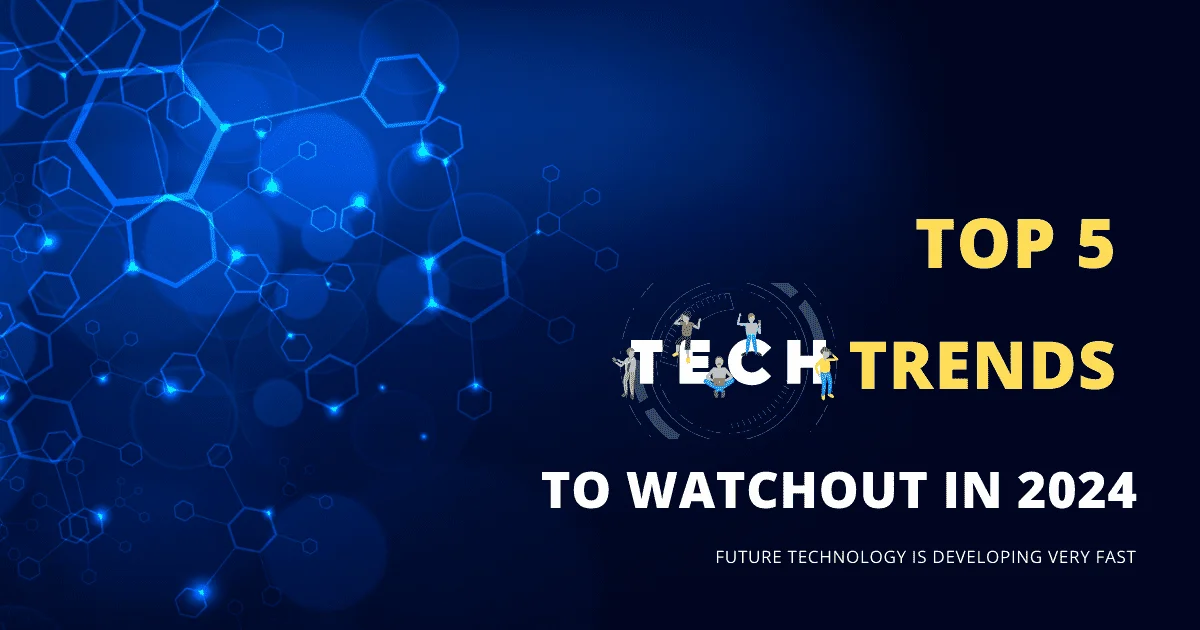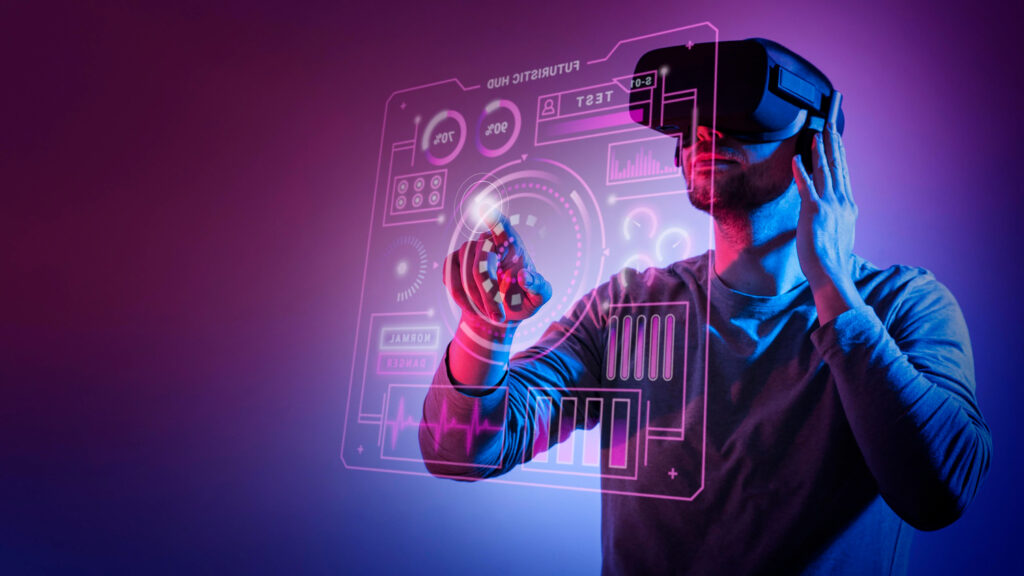
In this growing digital world, the technological horizon is brimming with innovations. These innovations promise to redefine our daily lives, industries, and the global economy. This year, several ground-breaking tech trends are set to gain momentum. Each trend has the potential to catalyze profound transformations across various sectors. From the creative realms of generative AI to the immersive experiences enabled by mixed reality. And from the nascent field of quantum computing to the vital areas of sustainable technology and cyber resilience. These trends are not just shaping the future; they are scripting a new era of digital evolution.
The pace at which these technologies are evolving underscores a critical juncture in our relationship with digital tools, platforms, and systems. They represent not merely advancements in computing power or software capabilities but a deeper integration of digital solutions into the fabric of society. This integration is facilitating more personalized, efficient, and secure interactions, offering unprecedented opportunities for innovation and growth.
This article explores the top 5 tech trends to watch in 2025. It delves into their current state, key developments, and the broader impact they are poised to have on the world. By understanding these trends, businesses, policymakers, and individuals can better prepare for the changes ahead. They can ensure they are not just spectators but active participants in the unfolding digital revolution.

Generative AI stands at the forefront of technological innovation. Moreover, it marks a significant leap in how machines understand, interpret, and create content. This form of artificial intelligence utilizes deep learning models like Generative Adversarial Networks (GANs) and transformers. Additionally, these models are capable of producing original content, including text, images, music, and even code. Furthermore, the content generated by generative AI is often indistinguishable from human-generated work.
2025 is witnessing an explosion in the capabilities and applications of generative AI. The year has seen the introduction of more sophisticated models that have significantly lowered the barrier to entry for creating high-quality, original content. These models have become more intuitive, requiring less specialized knowledge to use, thus democratizing creative capabilities across various sectors.
One notable advancement is the refinement of text-to-video AI and image generation models. These models are now capable of producing intricate, high-resolution visuals from simple text descriptions. Similarly, AI-driven content generation tools are becoming increasingly popular among writers, designers, and developers, helping them streamline workflows and boost creativity.
The impact of generative AI is widespread, touching virtually every industry. In marketing, for instance, companies are leveraging these tech trends. They use them to create personalized advertising content at scale, significantly enhancing engagement and conversion rates. In the entertainment industry, filmmakers and game developers are using AI. They generate realistic environments and characters, reducing production costs and time. However, the rise of generative AI also brings with it ethical and legal considerations. Particularly concerning intellectual property rights and the authenticity of digital content. As such, there is a growing call for regulatory frameworks. These frameworks ensure that the use of generative AI aligns with societal norms and values.

Mixed Reality (MR) merges the physical world with digital elements, creating a hybrid environment where both coexist and interact seamlessly. This technology, encompassing both augmented reality (AR) and virtual reality (VR), is redefining the boundaries of user experience, offering immersive ways to engage with digital content.
The year 2025 has seen remarkable advancements in MR technology, driven by significant improvements in hardware and software. The development of lighter, more comfortable MR headsets with enhanced resolution and field of view has made the technology more accessible and appealing to a broader audience. Additionally, advances in spatial computing have improved the integration of digital objects into the physical world, making the MR experience more realistic and interactive.
MR’s potential applications are vast and varied. In healthcare, MR technologies are revolutionizing medical training and patient care, providing doctors and surgeons with immersive simulations and visualizations that enhance diagnostic accuracy and surgical precision. In education, MR offers innovative ways to engage students, making learning more interactive and effective by bringing complex subjects to life. The retail sector is also benefiting from MR, with virtual try-ons and in-store navigation enhancing the shopping experience. Meanwhile, in the manufacturing industry, MR is facilitating complex assembly processes, maintenance, and training, improving efficiency and safety.

Quantum technology harnesses the principles of quantum mechanics to develop systems that offer significant advantages over their classical counterparts. Quantum computing, in particular, promises to revolutionize fields that require immense computational power, from cryptography to material science.
2025 marks a pivotal year in the transition of quantum computing from theoretical exploration to practical application. Quantum processors are becoming more stable and scalable, thanks to breakthroughs in quantum error correction and the development of novel materials. This progress is accelerating the pace at which quantum computers can solve problems that are intractable for classical computers, such as simulating complex chemical reactions for drug discovery and optimizing large-scale logistics.
The implications of quantum technology are profound. In cybersecurity, quantum cryptography is offering new paradigms for secure communication, potentially rendering current encryption methods obsolete. In finance, quantum computing is being explored for risk assessment and high-frequency trading. It promises to drastically reduce processing times and improve accuracy. However, the advent of quantum technology also poses challenges. Particularly in terms of quantum supremacy. Quantum computers can outperform classical computers in specific tasks. This potentiality can disrupt current computing paradigms and security infrastructures.

Sustainable technology is at the heart of the global push towards environmental sustainability, focusing on developing solutions that promote energy efficiency, waste reduction, and the conservation of resources. This trend is driven by the urgent need to address climate change and ensure a sustainable future for the planet.
In 2025, sustainable technology is witnessing significant innovations aimed at reducing humanity’s environmental footprint. Developments in renewable energy, such as more efficient solar panels and wind turbines, are making clean energy more accessible and affordable. Similarly, advances in battery technology are enhancing energy storage capabilities, a critical factor in the viability of renewable energy sources.
The impact of sustainable technology is evident across multiple sectors. In transportation, the proliferation of electric vehicles (EVs) and improvements in public transit systems are reducing carbon emissions and pollution. In agriculture, precision farming techniques are optimizing resource use, reducing waste, and increasing productivity.
Moreover, sustainable technology is playing a crucial role in the built environment, with green building practices and smart home technologies contributing to energy conservation and reducing greenhouse gas emissions.

In the digital age, the threat landscape is constantly evolving, with cyber threats becoming more sophisticated and pervasive. Cyber resilience has thus emerged as a critical framework, focusing not just on preventing cyber attacks but also on ensuring that organizations can withstand and recover from them when they do occur. This comprehensive approach to cybersecurity emphasizes preparedness, defense, response, and recovery, aiming to safeguard information systems, protect the integrity of data, and maintain business continuity.
The year 2025 has seen a paradigm shift in the approach to cybersecurity, with a heightened focus on cyber resilience. Organizations are increasingly adopting advanced cybersecurity technologies that leverage artificial intelligence (AI) and machine learning (ML) for proactive threat detection and response. These technologies enable the identification of potential threats before they can cause harm, significantly reducing the risk of data breaches and cyber-attacks. Moreover, there is a growing emphasis on incident response planning and simulation exercises. These activities help organizations prepare for potential cyber incidents by developing and testing their response strategies, ensuring that they can quickly and effectively address any security breaches.
Another notable development is the adoption of zero trust architectures. In a zero trust framework, every entity within or outside the network must actively undergo verification when attempting to access resources on the network. This approach minimizes the attack surface and reduces the potential impact of cyber threats.
The focus on cyber resilience is transforming how organizations approach cybersecurity. By adopting a more holistic and proactive strategy, companies can not only defend against cyber threats but also ensure they are prepared to deal with incidents when they arise. This resilience is crucial for maintaining trust and confidence among customers and stakeholders, especially in sectors where the protection of sensitive data is paramount, such as finance, healthcare, and government.
Furthermore, the emphasis on cyber resilience is encouraging a culture of security awareness within organizations. Employees are being trained to recognize and respond to cyber threats, making them an integral part of the organization’s defense strategy. This collective vigilance is essential in an era where cyber threats can emerge from any direction and at any time.
As digital transformation accelerates, the importance of cyber resilience will only continue to grow. Organizations that invest in building robust cyber resilience frameworks will be better positioned to navigate the complexities of the digital landscape, protect their assets, and ensure their long-term success.
As we navigate through 2025, the technological landscape is undergoing a transformation that is as profound as it is rapid. The trends of generative AI, mixed reality, quantum technology, sustainable technology, and cyber resilience are not only reshaping industries and economies but also redefining our very understanding of what is possible. These developments hold the promise of a future that is more connected, more sustainable, and more secure, offering new opportunities for innovation and growth.
Yet, as we embrace these opportunities, we must also confront the challenges they present. The ethical considerations of generative AI, the privacy concerns of mixed reality, the security implications of quantum technology, the environmental impact of new technology trends, and the ever-evolving threat landscape of cyber resilience require thoughtful consideration and action. It is imperative that we approach these advancements with a sense of responsibility, ensuring that they serve to enhance, rather than undermine, the well-being of society.
In conclusion, the tech trends of 2025 offer a glimpse into a future that is both exciting and uncertain. By staying informed and engaged, we can harness the potential of these technologies to create a world that reflects our highest aspirations for innovation, sustainability, and security. The journey ahead is not without its challenges, but with collaboration, creativity, and commitment, we can navigate the complexities of the digital age and build a digital future for all.